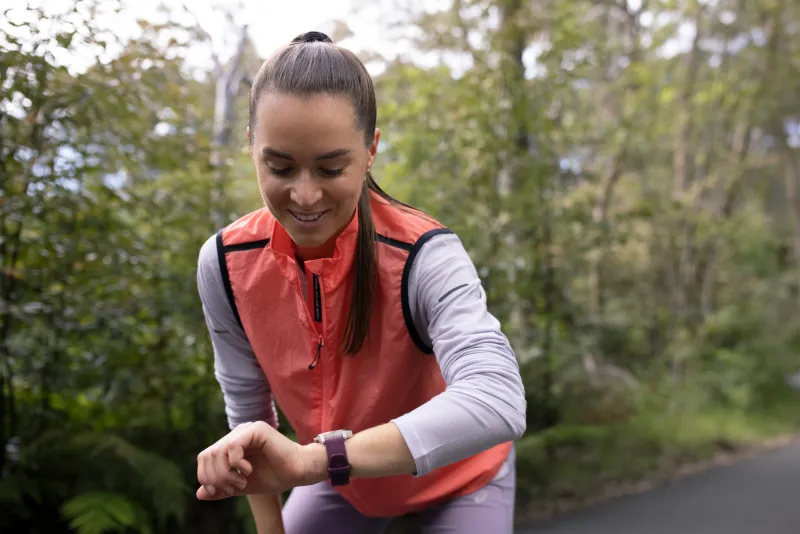
Training Tips for Long Distance Running
January 25, 2024
Getting ready for a long distance run involves breathable clothing, the right type of shoes, mental preparation, and more. Find out what to do for optimal performance before your long distance run.
Long distance running may have many benefits, including improved mental wellbeing and physical health. Many long distance runners experience health improvements to their cardiovascular system, muscular strength, and body composition.
While long distance running is a great way to stay fit, the continual impact on your joints during long runs can take a toll on the body if you don’t prepare properly. To make the most of your runs and maximize the benefits, consider the following training tips on your long distance running journey.
Wear breathable clothes

Wearing the right clothing is important to stay comfortable on long runs. In warm climates, you will want to have clothing that promotes air flow and reduces heat in key heat zones. Wearing loose fitting clothing made of lightweight material can ensure you have freedom of movement while on your runs. Clothes with moisture-wicking properties are often a great choice to prevent excess sweating and keep you dry. To meet runners’ needs in warm climate, the ASICS team developed the ACTIBREEZE™ technology collection to help runners stay comfortable and cool during hot runs.
In cold weather, dressing warm to prevent excess body heat loss. Because the body sweats less, runners are often able to get away with thicker materials and closer fitting clothing (such as tights) to protect the body from cold temperatures. There are several tights and warm clothing options available for runners at ASICS.
Choose the right type of shoe

Long distance runners rely on their shoes to withstand miles of wear and tear while retaining maximal cushioning and comfort. When looking for a running shoe, long distance runners will want to find shoes that maximize their value in terms of longevity, comfort, and price.
Finding the right shoe for you will depend on your pronation, gait mechanics, experience level, and foot anatomy. Many long distance runners enjoy shoes with wide toe boxes to accommodate for foot swelling on long runs. For new runners, having extra cushion can help ease the joints into a new training regimen. Experienced runners may be able to get away with more minimalist designs.
Plan out your training regimen

When you find an activity you love, it is easy to hop into it “full steam ahead.” While it is great to be motivated and passionate, going into a new training routine without the proper build up can lead to overuse injuries. When you begin a long distance running training regimine, consider starting with slower or shorter distances and monitor how your body feels. As you get stronger, you can build up your distances and speed. Depending on your starting level of fitness, this build up process can take a few months. But don’t worry - you will be in peak shape in no time, and feeling healthy while at it!
Warm up and cool down
Warming up and cooling down before and after a long run is imperative to maintain healthy joints and muscles. When you warm up, consider a light jog or some jumping jacks before stretching out the leg muscles. This will increase the elasticity of your muscles and lower the risk of injury. During cool down, stretch the leg muscles while you are warm from your run to reduce any soreness or aching the next day.
Stay hydrated

Staying hydrated is key to maintaining comfort and health on long distance runs. When you are dehydrated, your energy will decrease and you may feel light headed. To stay hydrated on runs, consider three key stages: pre-run hydration, hydration during your run, and post-run hydration. If your run is under 45 minutes, you may be able to skip hydration during the run. For longer runs, you should plan to carry water (water backpacks are great!) or schedule a pit stop somewhere to re-up on hydration.
When deciding how much water to consume, consider these standards: start with 2-3 cups of water about two hours before the run, drink around 1 cup of water every 20 minutes while running, and drink 2-3 cups of water per pound of water weight lost during the run. While every individual will vary in their exact needs, following these guidelines can help to prevent dehydration, especially in warm climates.
Take rest days
Don’t shy away from rest days! Rest days are an important preventative measure to avoid overuse injuries to the joints. All runners should aim to take at least one rest day per week, and many will take more. Beginner runners or those who are returning from injuries should aim to run only 1-2 days a week while their body grows accustomed to the training regimen. As you gain experience and build fitness, you can scale up to 4-6 days a week.















